Content pillars, also known as pillar pages, are high-level introductions to a topic. They link to more detailed resources about each subtopic to form a content hub.
Here are a few benefits of using a content hub strategy:
- Better organization – Pillar pages essentially act as a topical hub and allow you to explore a topic in detail.
- More engagement – It’s easy for readers to find related content and consume more.
- More links – People often link to content pillars, as they’re a good starting point for those wanting to learn about a topic.
In this guide, you’ll learn how to create a content pillar for your website.
How to create content pillars
Follow the steps below to create content pillars for your website.
1. Find the main topic to create a content pillar around
Grab a seat, a pen and paper (or laptop), then brainstorm ideas for content pillars. If you’re familiar with the niche, many topics should come to mind.
For example, I’ve been breakdancing for the past 10 years, and I can think of plenty of topics for pillar pages (e.g., types of power moves, must-know footwork steps, and more).
Alternatively, you can also use Ahrefs’ Keywords Explorer to find ideas. Just enter a broad term related to your niche and go to the Matching terms report.
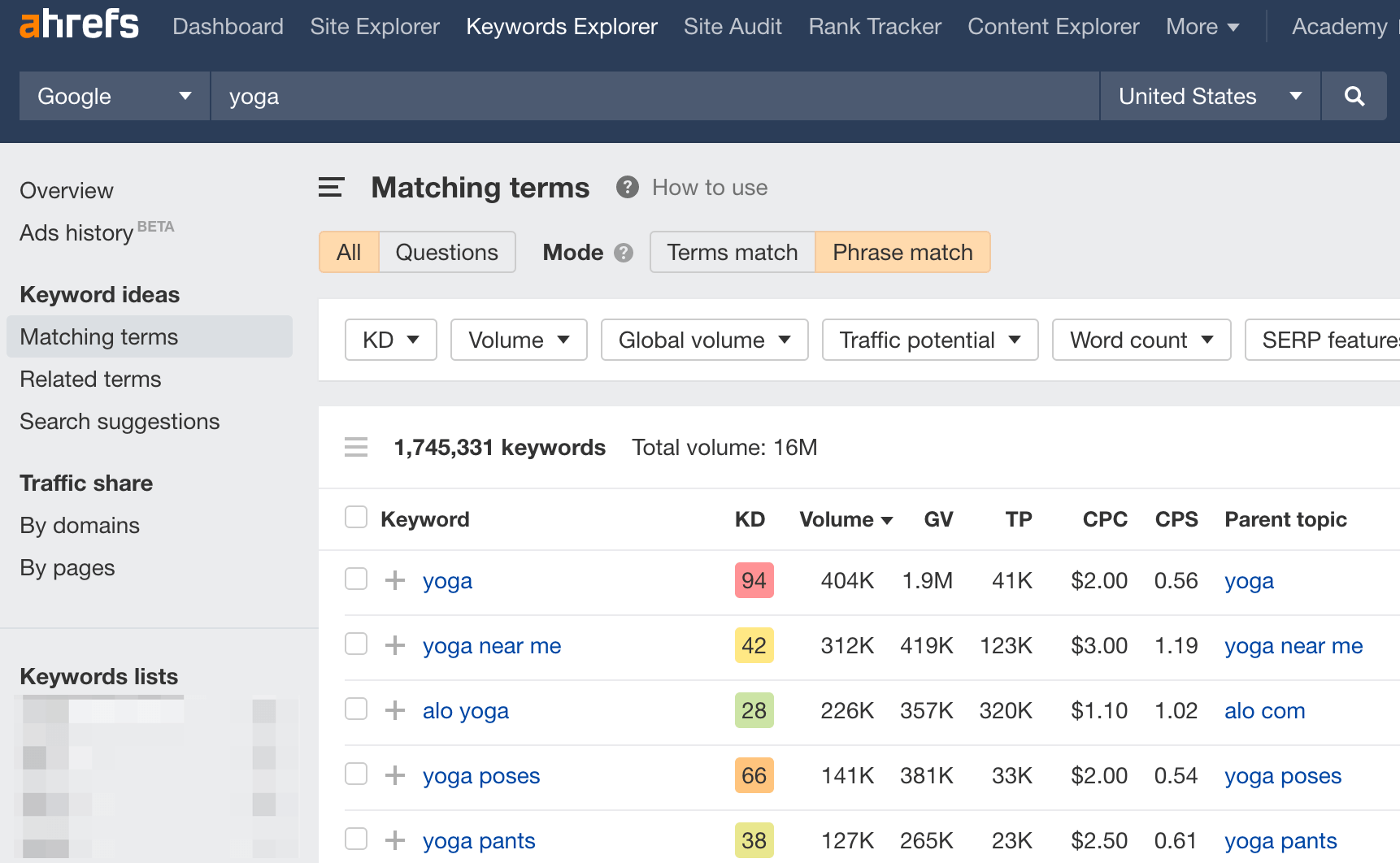
However, not every term here will be a suitable topic. What’d you want are topics that:
- Have informational intent – People are looking for information, not to buy. You can verify this by Googling the topic. If most of the results are blog posts, articles, or other hubs, the topic likely has informational intent.
- Have search traffic potential – Look at the Traffic Potential (TP) column beside each keyword to see its search traffic potential.
- Are broad enough – The topic shouldn’t be so narrow that there aren’t any subtopics to talk about. And it shouldn’t be so broad that your pillar page is 50,000 words long either. As a general rule of thumb, look for topics with between five and 20 subtopics.
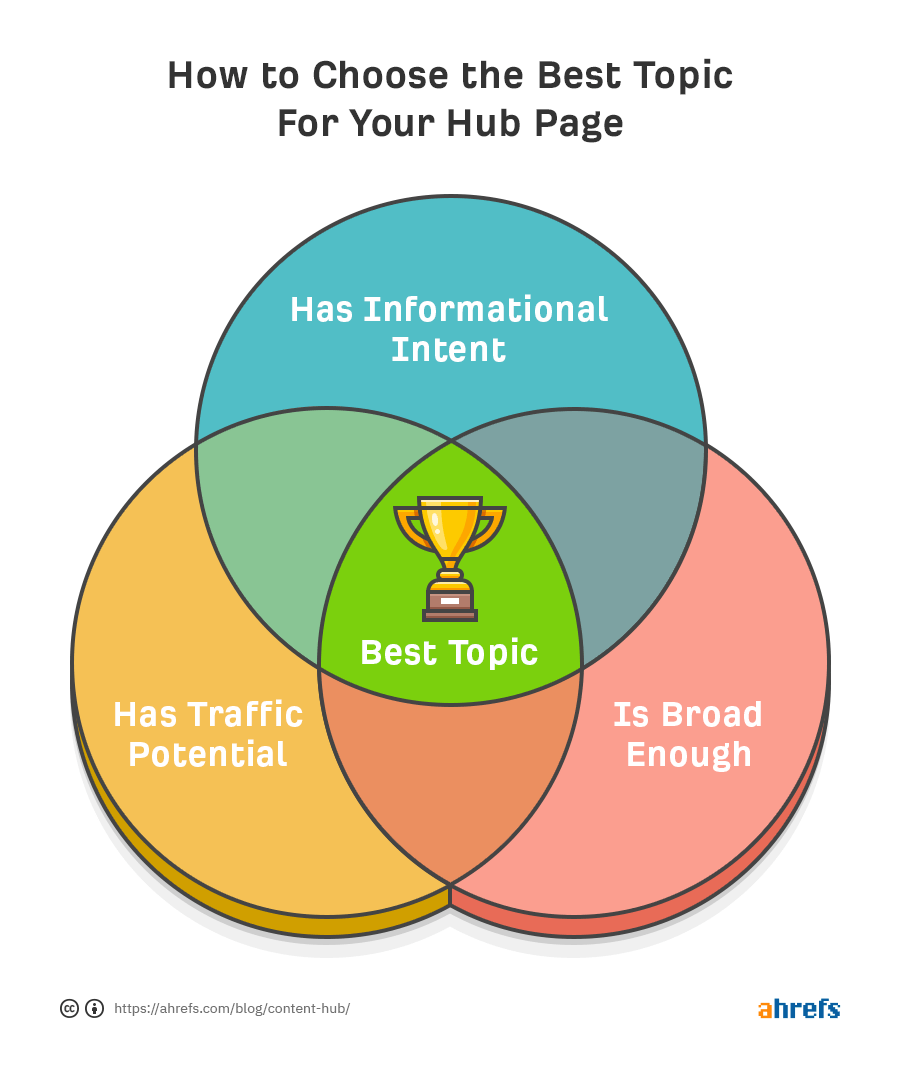
For example, let’s compare the topic “yoga poses” against the criteria:
- Has informational intent – Almost all of the results are blog posts.
- Has search traffic potential – The topic’s TP is 33,000 (in the U.S. alone).
- Is broad enough – There are potentially hundreds of yoga poses to cover. But if we narrow down to the “best” ones for beginners, there should be a nice range for a pillar page.

If you’re a yoga site, this could be a fantastic topic for a content pillar.
2. Figure out what you need to cover in your content pillar
The key here is to choose subtopics that are highly related to the main topic.
Here are a few ways to find them:
A. From your expertise
If you’re an expert or familiar with the niche, then you probably have an idea of what you need to cover. For example, if you’re a yoga teacher, you likely already know the different types of yoga poses that beginners should master first.
B. Check Wikipedia
If your topic exists on Wikipedia, it’s a great way to find subtopics since everything is already organized properly.
For example, Wikipedia has a page called “List of asanas,” where different yoga poses are arranged in a table:
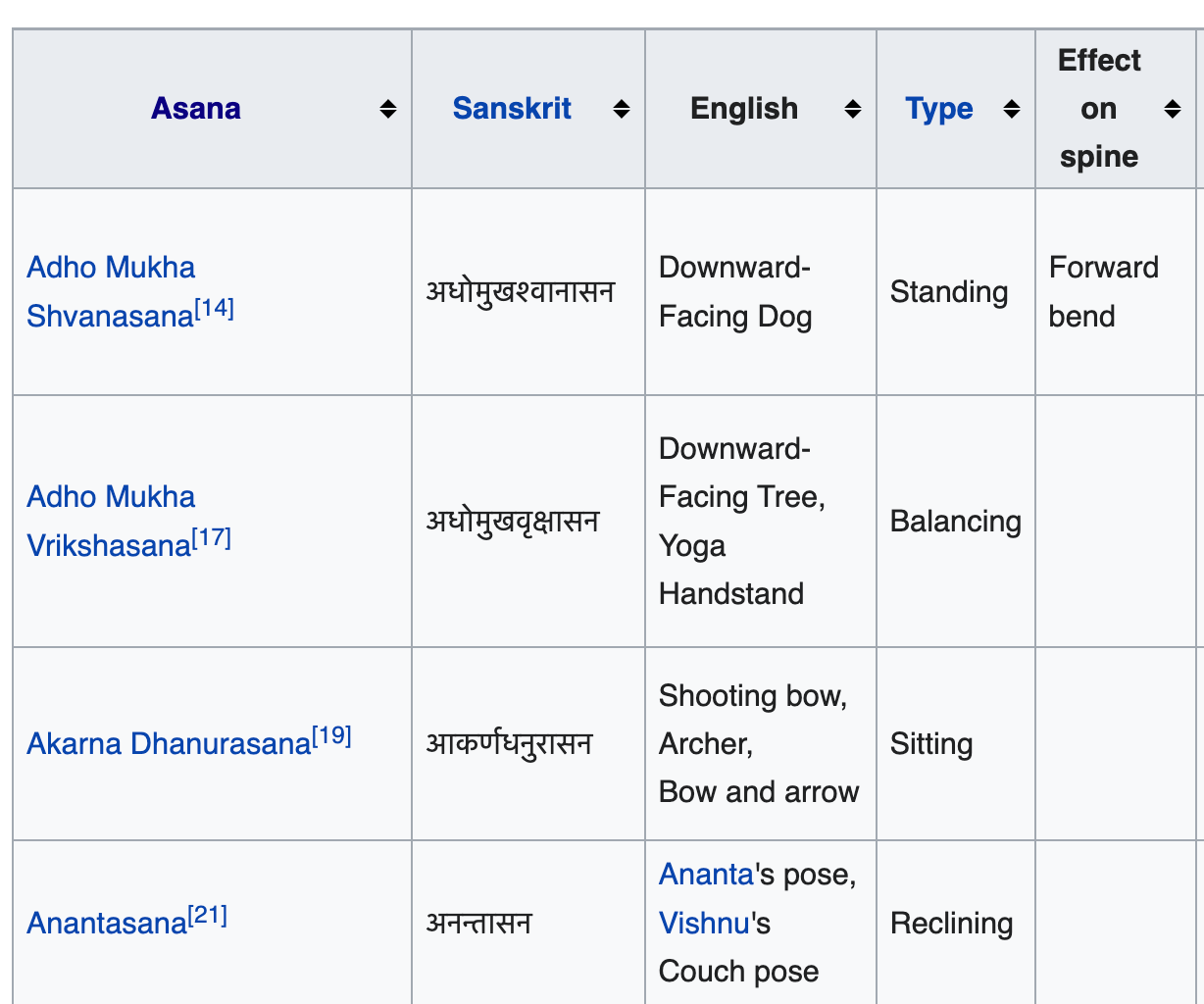
C. Look at online courses
Online courses exist for almost any topic, and they’re usually structured in a logical manner. Therefore, they’re also good places to look for relevant subtopics.
For example, this course on Udemy covers the key poses for yoga:
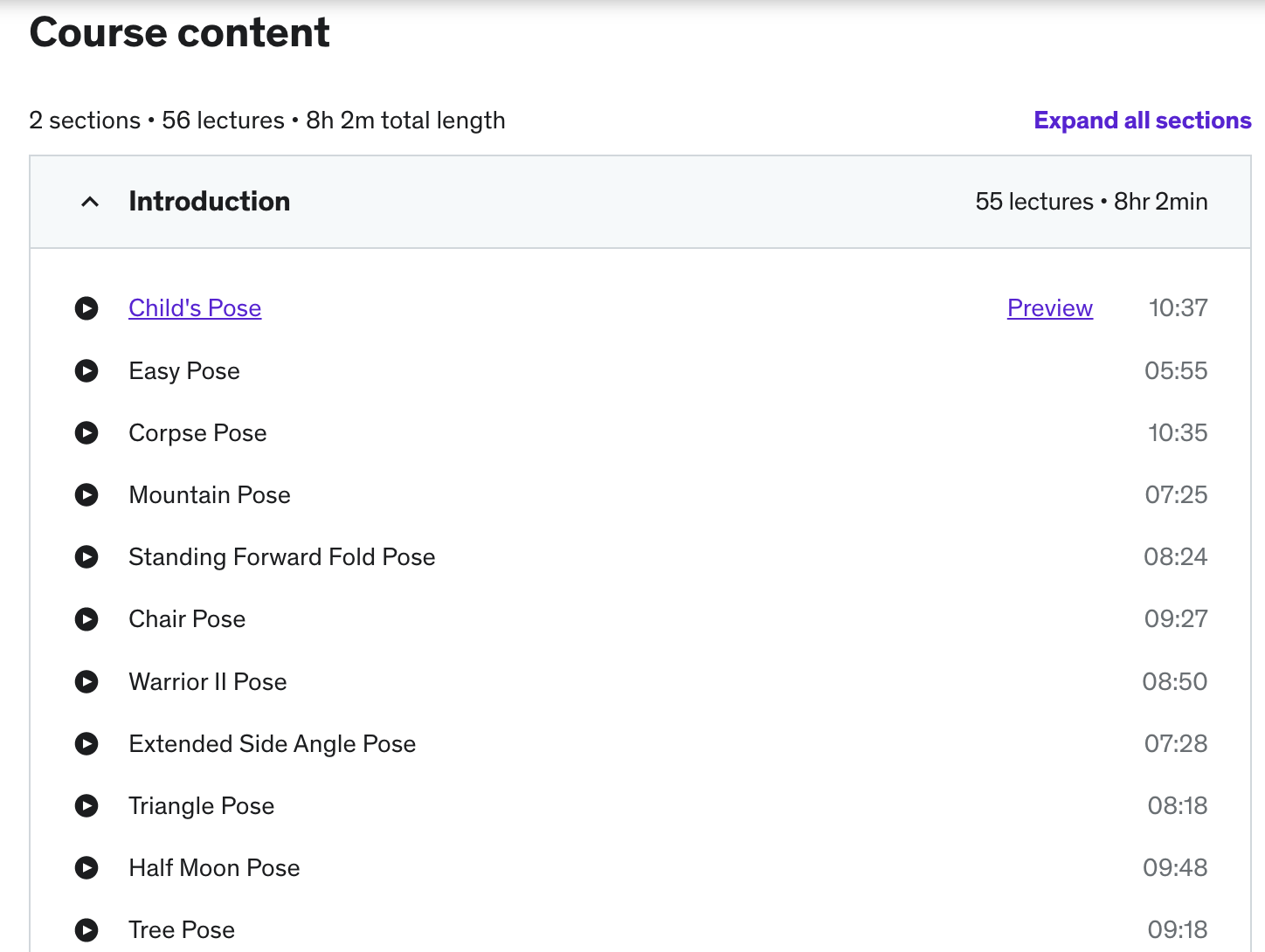
D. Analyze the competition
Since the main goal of a content pillar is to rank for the main topic, you can look at the current top-ranking pages to see what they’re covering.
For example, the top-ranking page for “yoga poses” has already covered the essential poses for beginners:
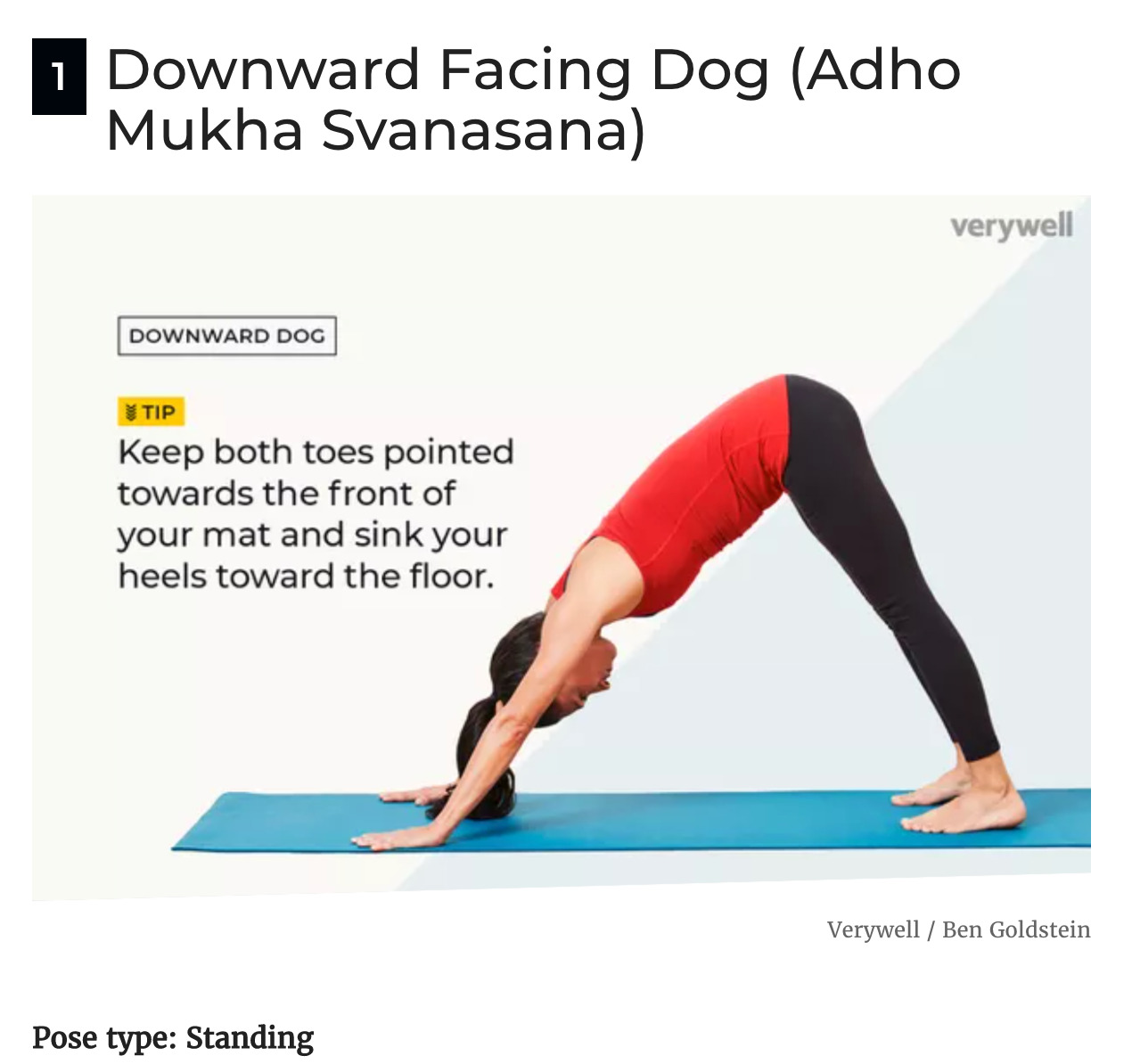
Since the subtopics are organized neatly in a hierarchical manner—H2s, H3s, H4s, etc.,—a good way to see all of them at one glance is to install Ahrefs’ SEO Toolbar and open the Content report.

Sidenote.
This is simply research for your content pillar. You want to make sure you’re not missing out on important subtopics. But you’re not trying to squeeze in every subtopic either. Use your expertise and taste to figure out what you should include on your pillar page.
3. Create your content pillar
With your research done, it’s time to create your content pillar.
Think of it as a “portal.” Your goal is to give readers a jump-off point for further discovery of the topic. So keep it relatively light.
You’re not trying to say everything about every subtopic. Leave it to your cluster pages to provide more detail. Stick to what people need to know.
For example, our beginner’s guide to SEO only has a one-sentence introduction to each chapter:

If you have the budget, consider creating a custom design for your content pillar. This is what we did for our own. Not only does a good design make it easier for readers to consume content, but it also stands out among other guides—hopefully leading to more shares, links, and traffic.
But if you can’t afford a custom design now, don’t worry. You don’t need an incredible design to create useful content pillars. Take a look at Zapier’s pillar page about remote work—it’s basically text:

4. Create your cluster pages
Even though a content pillar is a stand-alone page, it’s almost useless without its supporting cluster pages. So when you’re done with the main pillar page, it’s time to create the rest of the hub.
With the subtopics laid out, you already know what you need to create. It’s simply a matter of executing. But it will take time.
Watch this video to learn how to create content for your cluster pages:
If you have existing content pieces that fit the “hub,” then simply interlink them together.
5. Promote your content pillar
Don’t wait for the content pillar to be discovered—promote it proactively and let people know.
Here are a few tactics you can use:
- Share it with your audience – Email list, social media accounts, etc. Share it wherever you have a following.
- Get it included in newsletters – There should be many newsletters dedicated to curating the best content in your niche. Find the emails of these newsletter writers and pitch your content pillar for inclusion.
- Share it on communities – If you’re an active member of any communities—Facebook groups, Slack, Discord, Reddit, forums—share your content pillar with them.
- Build links – Links are an important Google ranking factor. So if you want your content pillar to rank high, you’ll need to build links. Read this start-to-finish guide on how to build links to your pillar page.
Recommended reading: 13 Content Promotion Tactics to Get More Eyeballs on Your Content
Content pillar examples
Check out these successful content pillars to inspire your own:
You can find more pillar page examples here.
Learn more
If you’re looking for more guides on how to create content pillars, I’d recommend checking out these articles:
Any questions or comments? Let me know on Twitter.
